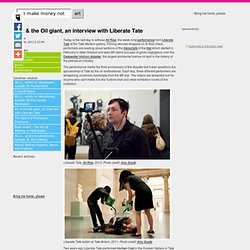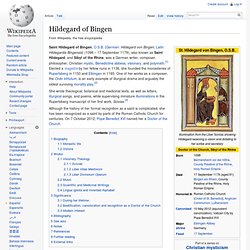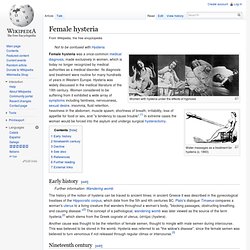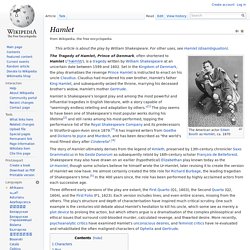

Art & the Oil giant, an interview with Liberate Tate. Today is the last day to witness All Rise, the week-long performance from Liberate Tate at the Tate Modern gallery.

Filming devices strapped on to their chest, performers are reading aloud sections of the transcripts of the trial which started in February in New Orleans and sees BP stand accused of gross negligence over the Deepwater Horizon disaster, the largest accidental marine oil spill in the history of the petroleum industry. The performance marks the third anniversary of the disaster but it also questions the sponsorship of Tate by the oil multinational. Each day, three different performers are whispering courtroom transcripts from the BP trial. Four temperaments. Choleric, melancholic, sanguine, and phlegmatic temperaments Four temperaments is a proto-psychological theory that suggests that there are four fundamental personality types, sanguine (pleasure-seeking and sociable), choleric (ambitious and leader-like), melancholic (analytical and literal), and phlegmatic (relaxed and thoughtful).

Most formulations include the possibility of mixtures of the types. The Greek physician Hippocrates (460–370 BC) incorporated the four temperaments into his medical theories as part of the ancient medical concept of humorism, that four bodily fluids affect human personality traits and behaviors. Later discoveries in biochemistry have led modern medicine science to reject the theory of the four temperaments, although some personality type systems of varying scientific acceptance continue to use four or more categories of a similar nature. Fjórar skapgerðir. The Anatomy of Melancholy. Hildegard of Bingen. Saint Hildegard of Bingen, O.S.B.

(German: Hildegard von Bingen; Latin: Hildegardis Bingensis) (1098 – 17 September 1179), also known as Saint Hildegard, and Sibyl of the Rhine, was a German writer, composer, philosopher, Christian mystic, Benedictine abbess, visionary, and polymath.[1] Elected a magistra by her fellow nuns in 1136, she founded the monasteries of Rupertsberg in 1150 and Eibingen in 1165. One of her works as a composer, the Ordo Virtutum, is an early example of liturgical drama and arguably the oldest surviving morality play.[2] Although the history of her formal recognition as a saint is complicated, she has been recognized as a saint by parts of the Roman Catholic Church for centuries.
On 7 October 2012, Pope Benedict XVI named her a Doctor of the Church. Biography[edit] Monastic life[edit] Perhaps due to Hildegard's visions, or as a method of political positioning, Hildegard's parents offered her as an oblate to the church. Ode to Psyche. Amor and Psyche, sculpted in marble during the late 18th century "Ode to Psyche" is a poem by John Keats written in spring 1819.

Major depressive disorder. Female hysteria. Women with hysteria under the effects of hypnosis Water massages as a treatment for hysteria (c. 1860) Female hysteria was a once-common medical diagnosis, made exclusively in women, which is today no longer recognized by medical authorities as a medical disorder.

Its diagnosis and treatment were routine for many hundreds of years in Western Europe. Vapours (disease) The term referring to illnesses known as the vapours (or vapors) is an archaic form for certain mental or physical states,[1] such as hysteria, mania, clinical depression, bipolar disorder, fainting, withdrawal syndrome, mood swings or PMS, ascribed primarily to women and thought to be caused by internal emanations.

This is related to the similar term female hysteria. Vapours were considered to be the female equivalent to melancholy found in men. The word vapours was used to describe a depressed or hysterical nervous condition. The term is no longer used.[2] Glósur. Melancholic depression. Melancholic depression.

Melancholic depression, or "depression with melancholic features", is a DSM-IV subtype of clinical depression requiring at least one of the following symptoms: Anhedonia (the inability to find pleasure in positive things)Lack of mood reactivity (i.e. mood does not improve in response to positive events) Mania. Mania varies in intensity, from mild mania (hypomania) to full-blown mania with extreme energy, racing thoughts, and forced speech.[4] Standardized tools such as Altman Self-Rating Mania Scale[5] and Young Mania Rating Scale[6] can be used to measure severity of manic episodes.

Because mania and hypomania have also been associated with creativity and artistic talent,[7] it is not always the case that the clearly manic bipolar person needs or wants medical help; such persons often either retain sufficient self-control to function normally or are unaware that they have "gone manic" severely enough to be committed or to commit themselves. Manic persons often can be mistaken for being on drugs or other mind-altering substances. Classification[edit] Mixed states[edit] The mixed state can put a patient at greater suicide risk. Hypomania[edit] Associated disorders[edit] A single manic episode is sufficient to diagnose bipolar I disorder.
Nostalgia. Nostalgia in its most common form was responsible for the old front desk of The Beverly Hills Hotel (from 1942 to 1979) being made into a bar.

In common, less clinical usage nostalgia can refer to a general interest in the past, their personalities and events, especially the "good old days" from one's earlier life. Boym[2] argues that nostalgia is more prevalent during times of great upheaval. As a medical condition[edit] Hamlet. Hamlet is Shakespeare's longest play and among the most powerful and influential tragedies in English literature, with a story capable of "seemingly endless retelling and adaptation by others.

"[1] The play seems to have been one of Shakespeare's most popular works during his lifetime[2] and still ranks among his most-performed, topping the performance list of the Royal Shakespeare Company and its predecessors in Stratford-upon-Avon since 1879.[3] It has inspired writers from Goethe and Dickens to Joyce and Murdoch, and has been described as "the world's most filmed story after Cinderella".[4]
Ode on Melancholy. Portrait of John Keats by William Hilton, after Joseph Severn (National Portrait Gallery, London) "Ode on Melancholy" is one of five odes composed by English poet John Keats in the spring of 1819, along with "Ode on a Grecian Urn", "Ode to a Nightingale", "Ode on Indolence", and "Ode to Psyche".